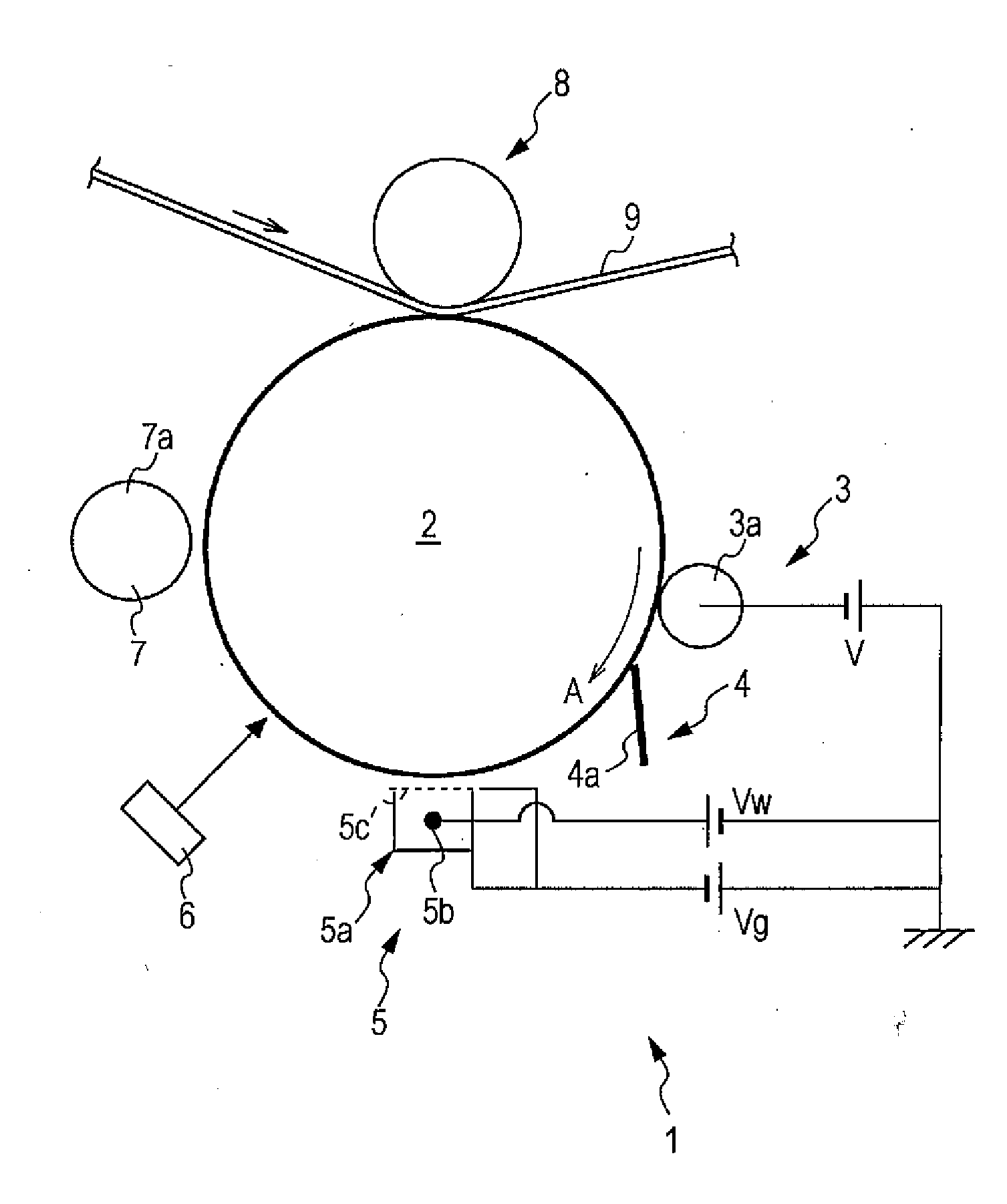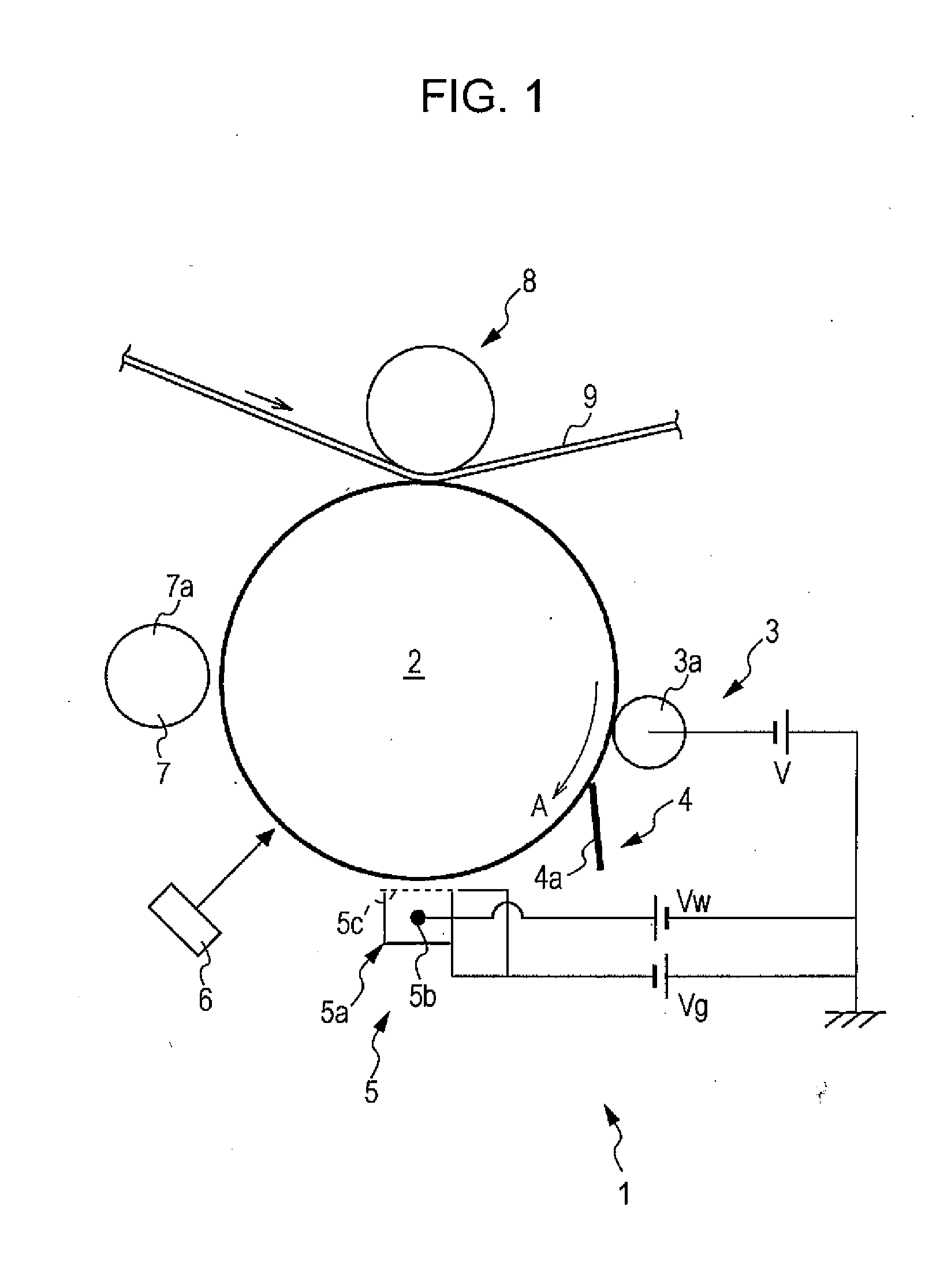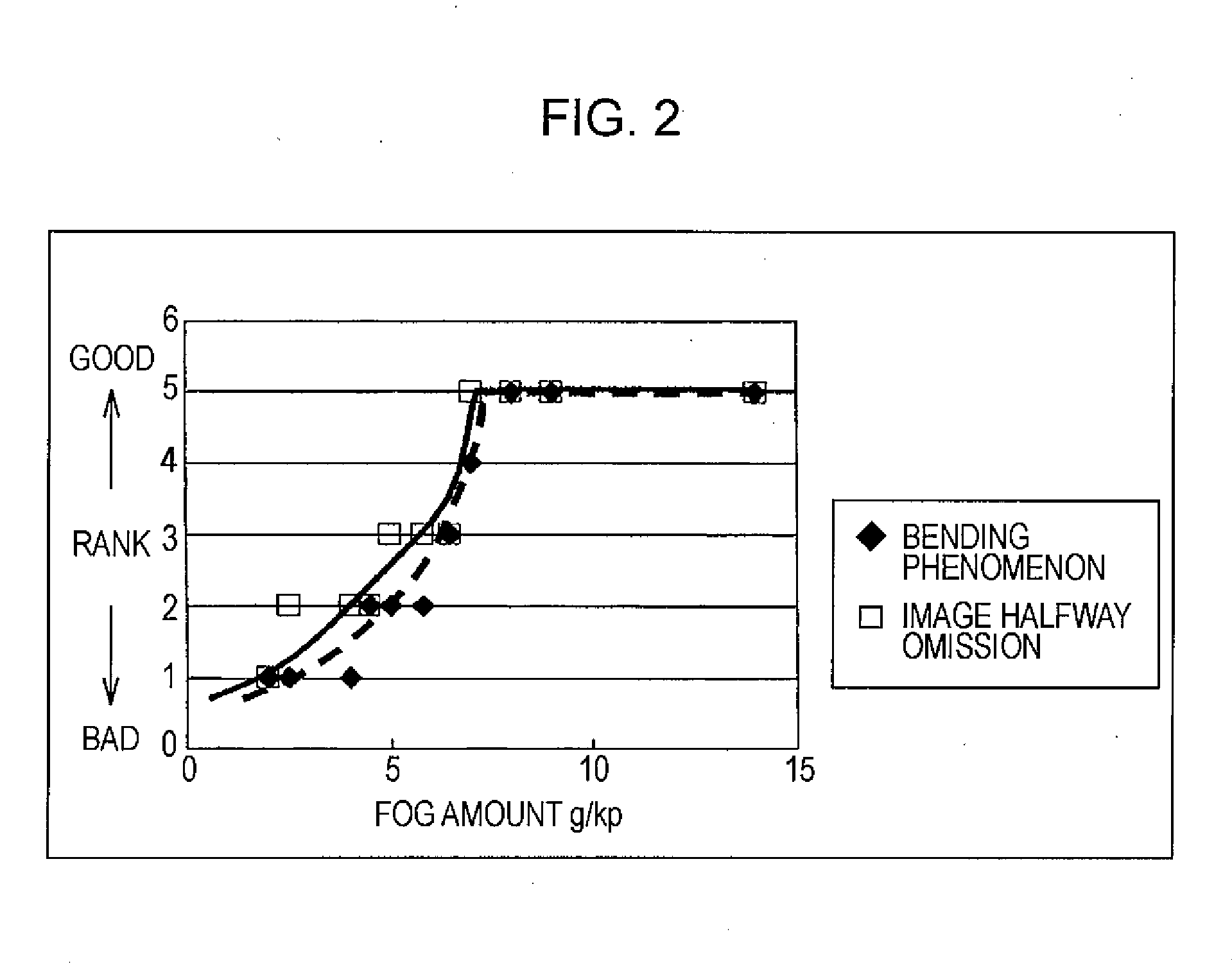Image Carrier Cleaning Device, Image Carrier Cleaning Method, and Image Forming Apparatus
- Summary
- Abstract
- Description
- Claims
- Application Information
AI Technical Summary
Benefits of technology
Problems solved by technology
Method used
Image
Examples
Embodiment Construction
[0020]Hereinafter, an exemplary embodiment of the invention will be described with reference to the accompanying drawings.
[0021]FIG. 1 is a diagram schematically and partially showing an image forming apparatus according to an example of an embodiment of the invention.
[0022]In an image forming apparatus 1 shown in the example, an image forming operation is carried out by a negatively charged toner. Of course, the image forming operation may be carried out by a positively charged toner. In the below description, the image forming apparatus 1 uses the negatively charged toner. However, in the case of the positively charged toner, the potential of the charging operation of each of the members to be described later may have the opposite polarity. In addition, the toner includes a toner mother particle and an external additive added to the toner mother particle, but in the below description, the toner mother particle is simply referred to as toner.
[0023]As shown in FIG. 1, the image form...
PUM
 Login to View More
Login to View More Abstract
Description
Claims
Application Information
 Login to View More
Login to View More - R&D
- Intellectual Property
- Life Sciences
- Materials
- Tech Scout
- Unparalleled Data Quality
- Higher Quality Content
- 60% Fewer Hallucinations
Browse by: Latest US Patents, China's latest patents, Technical Efficacy Thesaurus, Application Domain, Technology Topic, Popular Technical Reports.
© 2025 PatSnap. All rights reserved.Legal|Privacy policy|Modern Slavery Act Transparency Statement|Sitemap|About US| Contact US: help@patsnap.com



